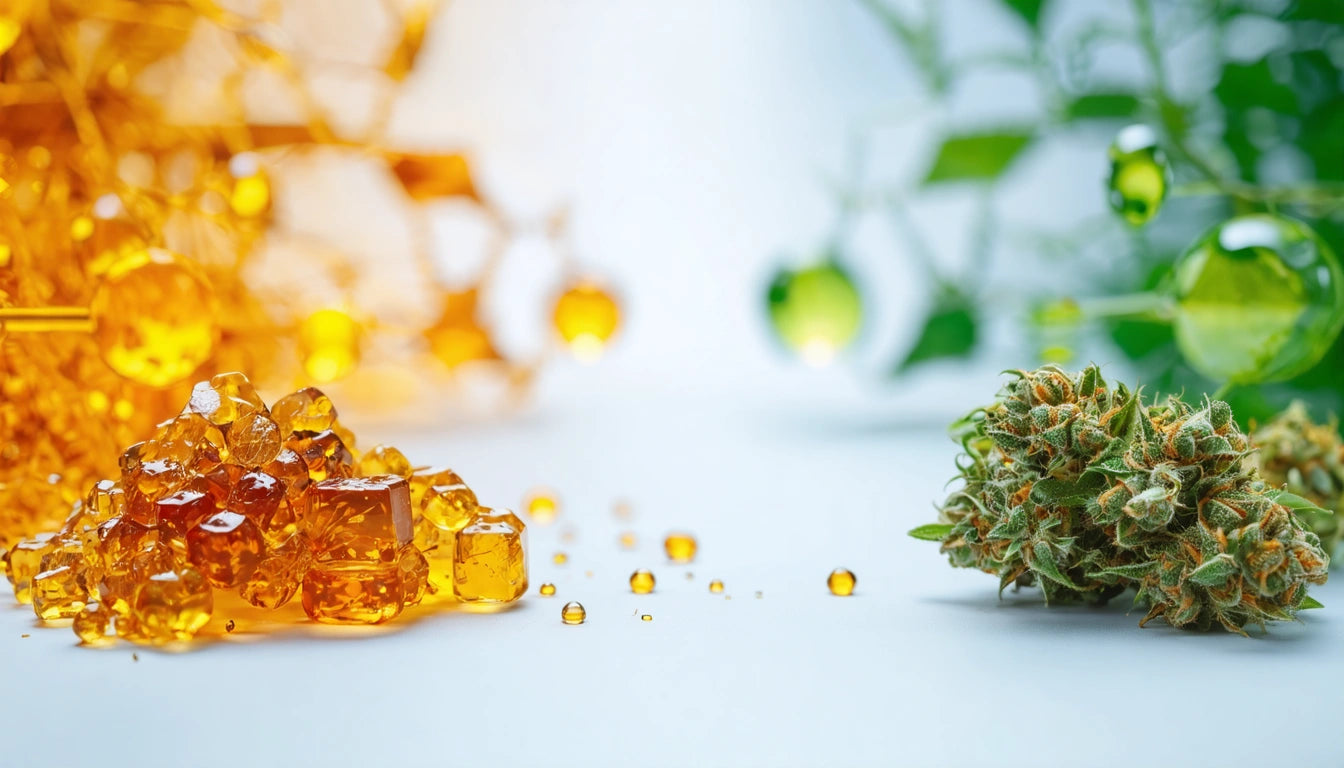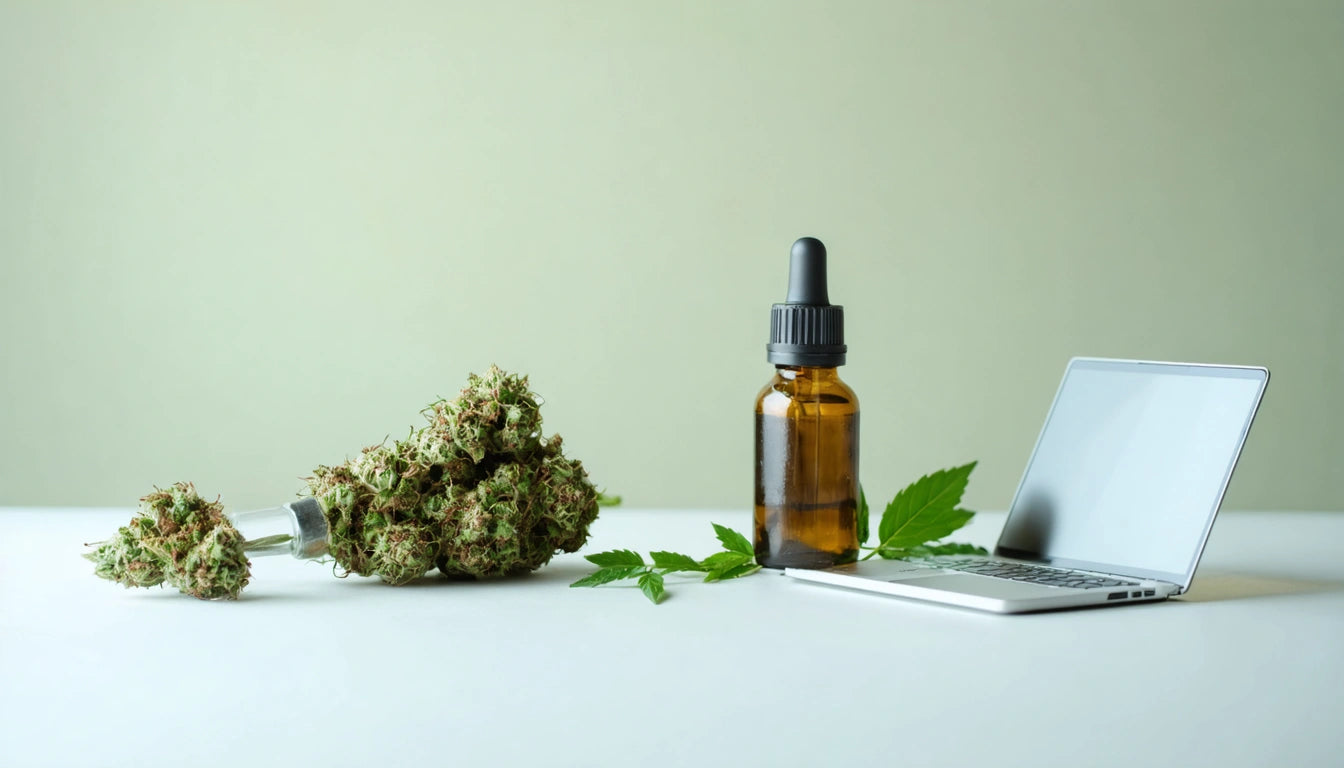Table of Contents
Live Resin vs Distillate: Comparing Effects, Quality, and Benefits
The cannabis concentrate market continues to evolve with innovative extraction methods that produce distinctly different products. Two of the most popular concentrates, live resin and distillate, represent opposite ends of the spectrum in terms of processing, effects, and overall experience. Understanding the differences between these concentrates can help consumers make informed decisions based on their preferences and desired effects.
Understanding Cannabis Extracts: Live Resin and Distillate
Live resin and distillate represent fundamentally different approaches to cannabis extraction. Each offers unique characteristics that appeal to different consumer preferences and use cases.
What is Live Resin?
Live resin is a premium cannabis concentrate made from flash-frozen plant material. Unlike traditional extracts that use dried and cured cannabis, live resin preserves the plant's original terpene profile by freezing the plant immediately after harvest. This preservation method maintains the aromatic compounds that would otherwise degrade during the drying and curing process.
What is Distillate?
Cannabis distillate is a highly refined extract that undergoes multiple purification processes to isolate specific cannabinoids, most commonly THC or CBD. Through molecular distillation, distillate production removes virtually all plant matter, terpenes, and compounds other than the target cannabinoid, resulting in a clear, potent, and nearly odorless oil that can reach up to 99% purity.
Production Methods and Processing Techniques
The stark contrast between live resin vs distillate begins with their production methods, which directly influence their chemical composition and effects.
Live Resin Extraction
Live resin production involves:
- Flash-freezing freshly harvested cannabis plants
- Extraction using hydrocarbon solvents (typically butane or propane)
- Low-temperature processing to preserve volatile compounds
- Minimal post-processing to maintain the natural plant profile
This gentle approach preserves the delicate balance of cannabinoids and terpenes found in the living plant, creating what many consider a more authentic representation of the strain's characteristics.
Distillate Production
Distillate undergoes a more intensive process:
- Initial extraction from dried plant material (often using ethanol or CO2)
- Winterization to remove fats and lipids
- Decarboxylation to activate cannabinoids
- Multiple rounds of distillation at precise temperatures
- Optional reintroduction of terpenes (often from botanical sources)
The result is a highly refined product with precise cannabinoid content but lacking the natural chemical diversity of the original plant.
Effects and Potency Comparison
The question "does live resin get you higher than distillate?" is common among consumers, but the answer isn't straightforward. The effects differ qualitatively rather than just quantitatively.
Live Resin Effects
Live resin typically provides:
- A more complex, well-rounded high due to the entourage effect
- Strain-specific effects that more closely mirror the original flower
- Potentially more therapeutic benefits from the preserved terpenes
- A high that many users describe as more nuanced and full-bodied
Distillate Effects
Distillate offers:
- A more predictable, consistent experience
- Potent effects focused primarily on the isolated cannabinoid
- Less variation between products of the same cannabinoid
- A cleaner, more straightforward high without the influence of other compounds
For those wondering if distillate or live resin is better for potency, distillate typically contains higher percentages of THC. However, many consumers report that live resin provides a more satisfying overall experience despite lower THC numbers, likely due to the entourage effect from preserved terpenes and cannabinoids working in concert.
Flavor and Terpene Profiles
The flavor experience represents one of the most significant differences between these concentrates.
Live Resin Flavor Profile
Live resin is celebrated for its rich, complex flavor that closely resembles the aroma of fresh cannabis. The flash-freezing process captures the plant's complete terpene profile, resulting in a product that's aromatic and flavorful. For connoisseurs seeking an authentic taste experience, comparing cured resin vs live resin shows how preservation methods impact flavor.
Distillate Flavor Profile
Pure distillate is essentially flavorless and odorless, as the distillation process removes terpenes along with other plant compounds. Many manufacturers reintroduce terpenes after distillation to create flavored products, but these added terpenes (whether cannabis-derived or botanical) don't recreate the complex profile of the original plant.
For optimal preservation of these delicate terpenes in either product, proper storage is essential. Using humidity control solutions helps maintain the quality and flavor profile of concentrates over time by preventing degradation from environmental factors.
Product Applications and Versatility
Both live resin and distillate serve different purposes in the cannabis market, with each excelling in specific applications.
Live Resin Applications
Live resin is commonly found in:
- Premium vape cartridges marketed for flavor and experience
- Dabbing concentrates for enthusiasts
- High-end infused pre-rolls
- Limited edition products highlighting specific strains
Distillate Applications
Distillate's versatility makes it ideal for:
- Standard vape cartridges
- Edibles production (due to minimal flavor)
- Tinctures and capsules requiring precise dosing
- Topicals where flavor isn't desired
- Base ingredient for infused products
When comparing cured resin vs live resin vs distillate for commercial applications, distillate offers consistency and scalability, while live resin provides premium experiences that command higher prices.
Choosing the Right Extract for Your Needs
When deciding between resin vs distillate products, consider your priorities and preferences:
Choose live resin if you value:
- Full-spectrum effects and the entourage effect
- Rich flavor and aromatic experience
- Strain-specific characteristics
- A more natural, less processed product
Choose distillate if you prioritize:
- Potency and consistency
- Versatility in consumption methods
- Minimal flavor (for edibles or mixing)
- Precise cannabinoid content
For those new to concentrates, comparing wax vs live resin or exploring different forms of live resin can provide additional context for making informed decisions.
The live resin vs distillate debate ultimately comes down to personal preference and intended use. Both have earned their place in the cannabis market, serving different consumer needs and applications. As extraction technology continues to evolve, we can expect even more specialized products that further refine the experience for increasingly sophisticated cannabis consumers.











Leave a comment
All comments are moderated before being published.
This site is protected by hCaptcha and the hCaptcha Privacy Policy and Terms of Service apply.